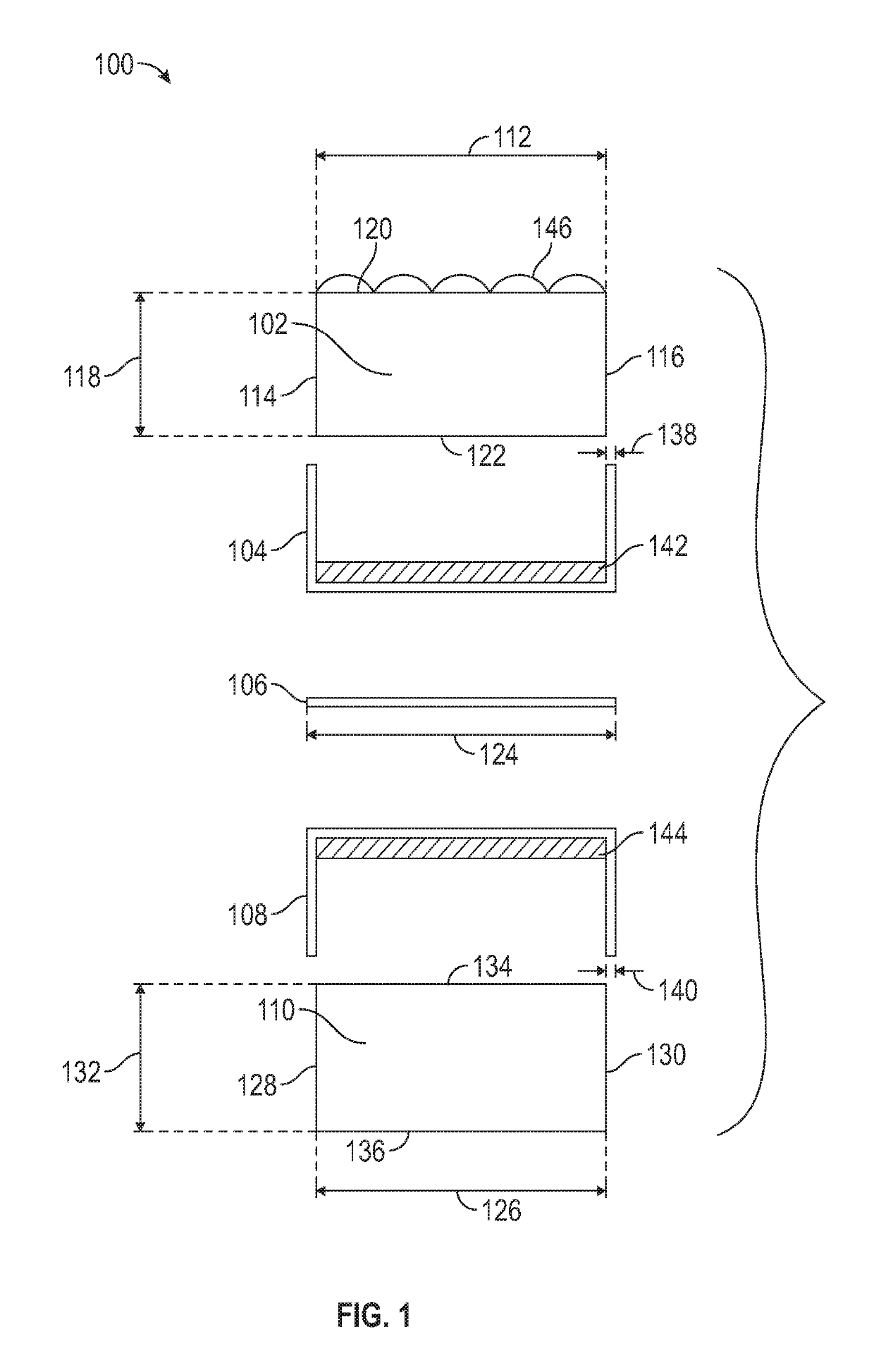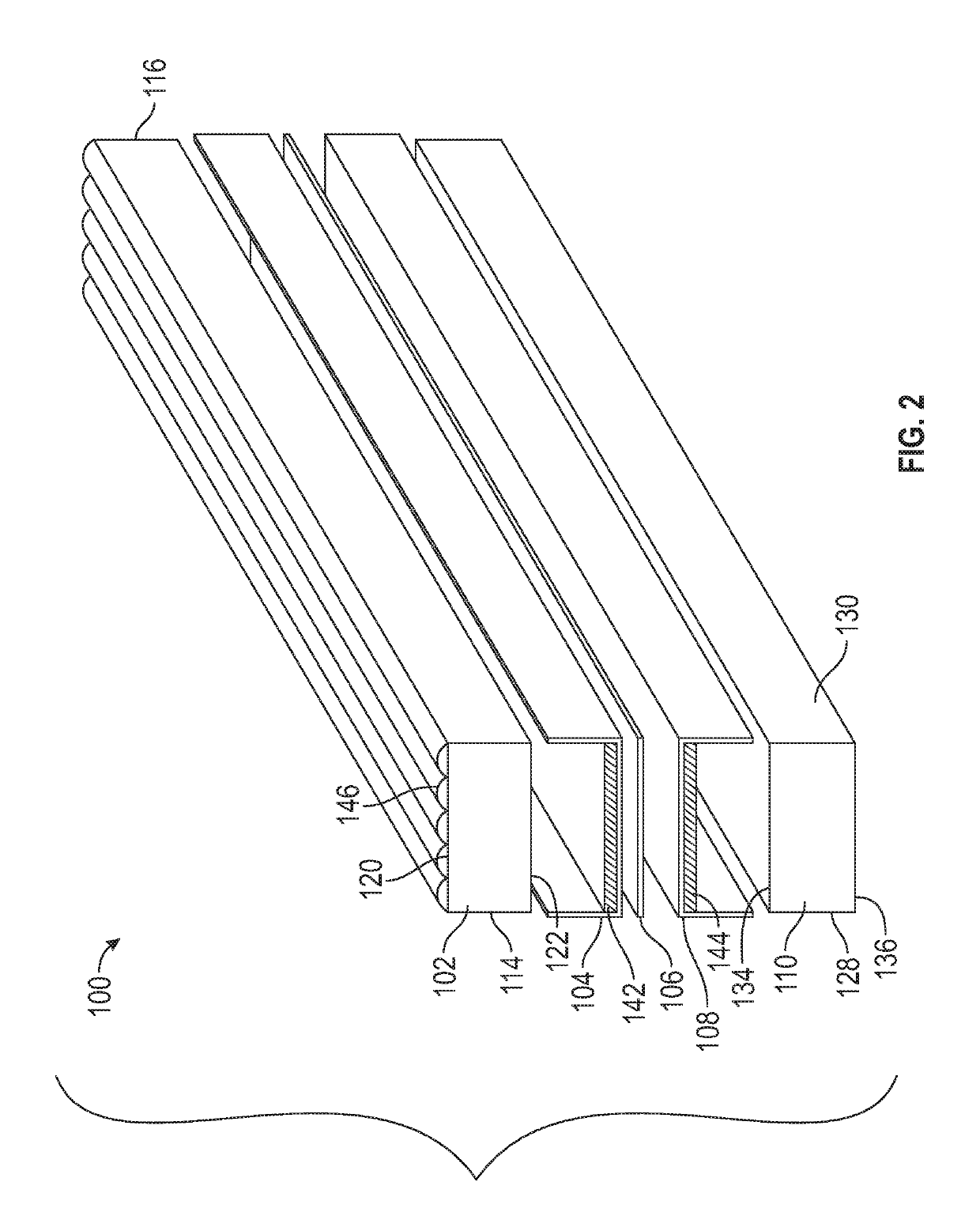Expansion joint system with flexible sheeting
a flexible sheeting and expansion joint technology, applied in fireproofing, buildings, roads, etc., can solve the problems of large waterproofing percentage, inability to function as cavity walls or curtain walls, water can penetrate the joint substrate in many ways, and large percentage of waterproofing
- Summary
- Abstract
- Description
- Claims
- Application Information
AI Technical Summary
Benefits of technology
Problems solved by technology
Method used
Image
Examples
Embodiment Construction
[0023]The present disclosure provides an expansion joint which may be used to seal against water penetration and to delay the penetration of flame through a structure.
[0024]Referring to FIGS. 1 and 2, end and isometric views of an expansion joint seal according to the present disclosure are provided. The expansion joint seal 100 includes a first body member 102, a first flexible sheeting 104, a second body member 110, and a second flexible sheeting 108.
[0025]The first body member 102 is preferably resiliency, elastically compressible. The body member 102 may be a foam member or may be a non-foam material which exhibits similar properties of compressibility, expansion, resiliency, and has the capacity to support liquid-based additives, such as fire retardants and fillers. The first body member 102 has a first body member width 112 between a first body member first side surface 114 and a first body member second side surface 116 and a first body member height 118 between a first body ...
PUM
| Property | Measurement | Unit |
|---|---|---|
| Temperature | aaaaa | aaaaa |
| Temperature | aaaaa | aaaaa |
| Length | aaaaa | aaaaa |
Abstract
Description
Claims
Application Information
 Login to View More
Login to View More - R&D
- Intellectual Property
- Life Sciences
- Materials
- Tech Scout
- Unparalleled Data Quality
- Higher Quality Content
- 60% Fewer Hallucinations
Browse by: Latest US Patents, China's latest patents, Technical Efficacy Thesaurus, Application Domain, Technology Topic, Popular Technical Reports.
© 2025 PatSnap. All rights reserved.Legal|Privacy policy|Modern Slavery Act Transparency Statement|Sitemap|About US| Contact US: help@patsnap.com


